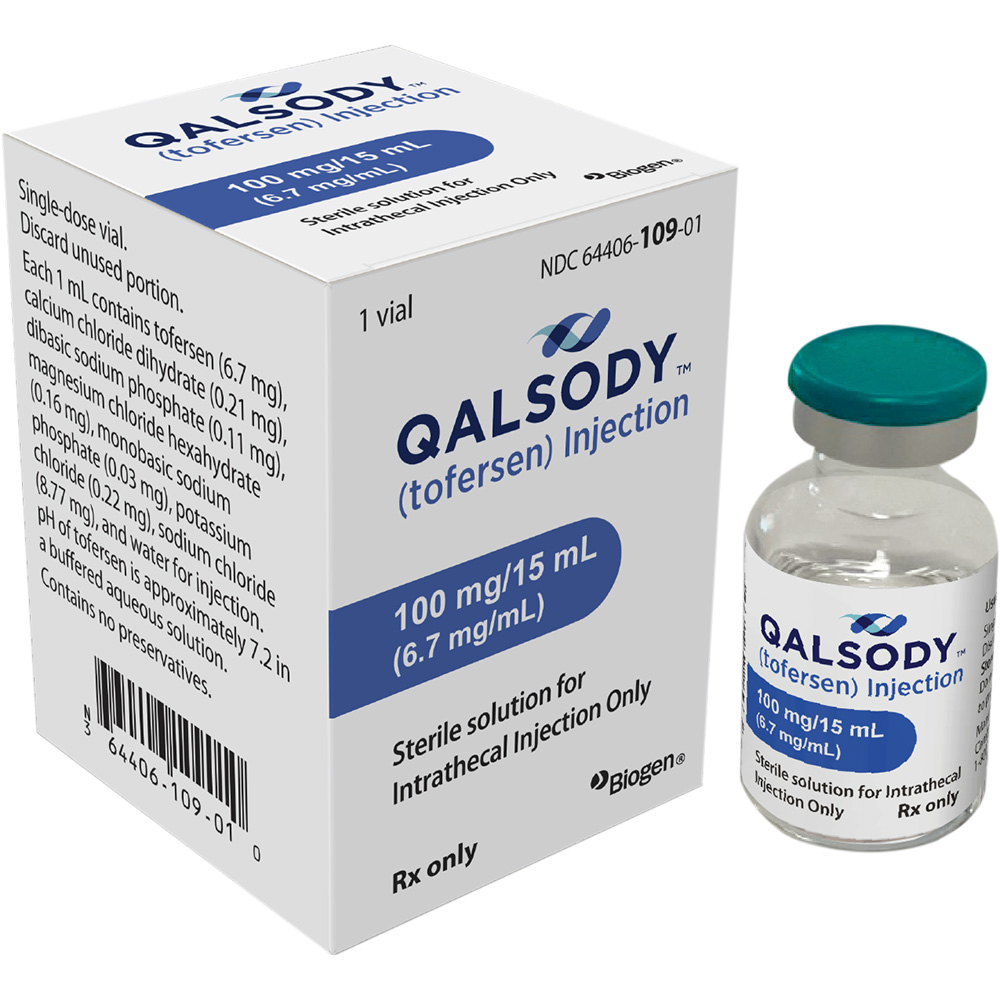Ammonaps (sodium phenylbutyrate) vs Qalsody (tofersen)
Ammonaps (sodium phenylbutyrate) vs Qalsody (tofersen)
Ammonaps (sodium phenylbutyrate) is a medication used to treat urea cycle disorders by helping to remove ammonia from the body, which can accumulate due to a deficiency in enzymes that are responsible for the urea cycle. Qalsody (tofersen), on the other hand, is designed to treat patients with Amyotrophic Lateral Sclerosis (ALS) caused by mutations in the SOD1 gene and works by reducing the levels of toxic SOD1 protein. The choice between Ammonaps and Qalsody would depend on the specific condition being treated, as they are used for entirely different diseases and mechanisms of action; therefore, a patient should consult with their healthcare provider to determine which medicine is appropriate for their individual medical condition.
Difference between Ammonaps and Qalsody
| Metric | Ammonaps (sodium phenylbutyrate) | Qalsody (tofersen) |
|---|---|---|
| Generic name | Sodium phenylbutyrate | Tofersen |
| Indications | Urea cycle disorders | Amyotrophic lateral sclerosis (ALS) |
| Mechanism of action | Converts to phenylacetate which conjugates with glutamine to form phenylacetylglutamine, thereby reducing ammonia levels | Antisense oligonucleotide that targets and reduces the production of superoxide dismutase 1 (SOD1) protein |
| Brand names | Ammonaps, Buphenyl | Qalsody |
| Administrative route | Oral | Intrathecal injection |
| Side effects | Nausea, vomiting, body odor, headache | Back pain, headache, falls, spasticity |
| Contraindications | Hypersensitivity to sodium phenylbutyrate or any component of the formulation | Hypersensitivity to tofersen or any component of the formulation |
| Drug class | Urea cycle disorder agent | Antisense oligonucleotide |
| Manufacturer | Horizon Pharma | Biogen |
Efficacy
Ammonaps (Sodium Phenylbutyrate) and ALS
Ammonaps, known generically as sodium phenylbutyrate, is a drug initially approved for the treatment of urea cycle disorders. However, its efficacy in the context of Amyotrophic Lateral Sclerosis (ALS) has been explored due to its potential neuroprotective effects. In ALS, Ammonaps is considered for off-label use and is thought to mitigate the effects of the disease by reducing neuronal stress and promoting neuronal survival. Clinical trials have investigated its impact on ALS progression, with some studies suggesting a possible benefit in slowing disease progression and extending survival. However, the evidence is not yet conclusive, and further research is needed to fully establish its efficacy for ALS patients.
Qalsody (Tofersen) and ALS
Qalsody, also known as tofersen, is a more recent development in the treatment of ALS. It is an antisense oligonucleotide designed to target the SOD1 gene, which is implicated in a subset of familial ALS cases. Tofersen aims to reduce the production of toxic SOD1 protein, thereby potentially slowing the progression of ALS in patients with SOD1 mutations. In clinical trials, Qalsody has shown promise in its ability to lower SOD1 protein levels in the cerebrospinal fluid, which could be indicative of its potential to modify the disease course in this specific ALS population.
Comparative Efficacy in ALS Management
When comparing the efficacy of Ammonaps and Qalsody for ALS, it's important to note that their mechanisms of action and target patient populations differ. Ammonaps is considered for broader off-label use in ALS and may have neuroprotective benefits, but its efficacy is not yet firmly established. On the other hand, Qalsody is specifically targeted at patients with SOD1 gene mutations and has shown more direct evidence of biological activity relevant to ALS pathogenesis. However, the clinical significance of these findings and the extent to which Qalsody can alter the disease trajectory in the long term are still under investigation.
Current Status and Future Directions
Both Ammonaps and Qalsody represent important avenues of research in the ongoing battle against ALS. While Ammonaps offers a potential off-label option that may support neuronal health, Qalsody is at the forefront of genetically targeted therapies. The continued evaluation of these drugs through rigorous clinical trials is essential to determine their place in ALS treatment regimens. Patients and healthcare providers should remain informed about the latest research developments and should consider the benefits and risks of these treatments within the context of individual patient needs and the evolving landscape of ALS therapy.
Regulatory Agency Approvals
Ammonaps
-
European Medical Agency (EMA), European Union

-
Food and Drug Administration (FDA), USA

-
Therapeutic Goods Administration (TGA), Australia

Qalsody
-
European Medical Agency (EMA), European Union

-
Food and Drug Administration (FDA), USA

Access Ammonaps or Qalsody today
If Ammonaps or Qalsody are not approved or available in your country (e.g. due to supply issues), you can access them via Everyone.org.
How it works

Make an enquiry
Choose the medicine you want to buy, answer a couple of questions, and upload your prescription to speed things up. We’ll get back to you within 24 hours.


Make an enquiry
Choose the medicine you want to buy, answer a couple of questions, and upload your prescription to speed things up. We’ll get back to you within 24 hours.


Breeze through the paperwork
We'll guide you through the required documents for importing unapproved medicine, ensuring you have all the necessary information.


Get a personalized quote
We’ll prepare a quote for you, including medicine costs and any shipping, administrative, or import fees that may apply.


Receive your medicine
Accept the quote and we’ll handle the rest - sourcing and safely delivering your medicine.

Some text on this page has been automatically generated. Speak to your physician before you start a new treatment or medication.
Let's talk
If you have any questions, call us or send us a message through WhatsApp or email:
Contact us




